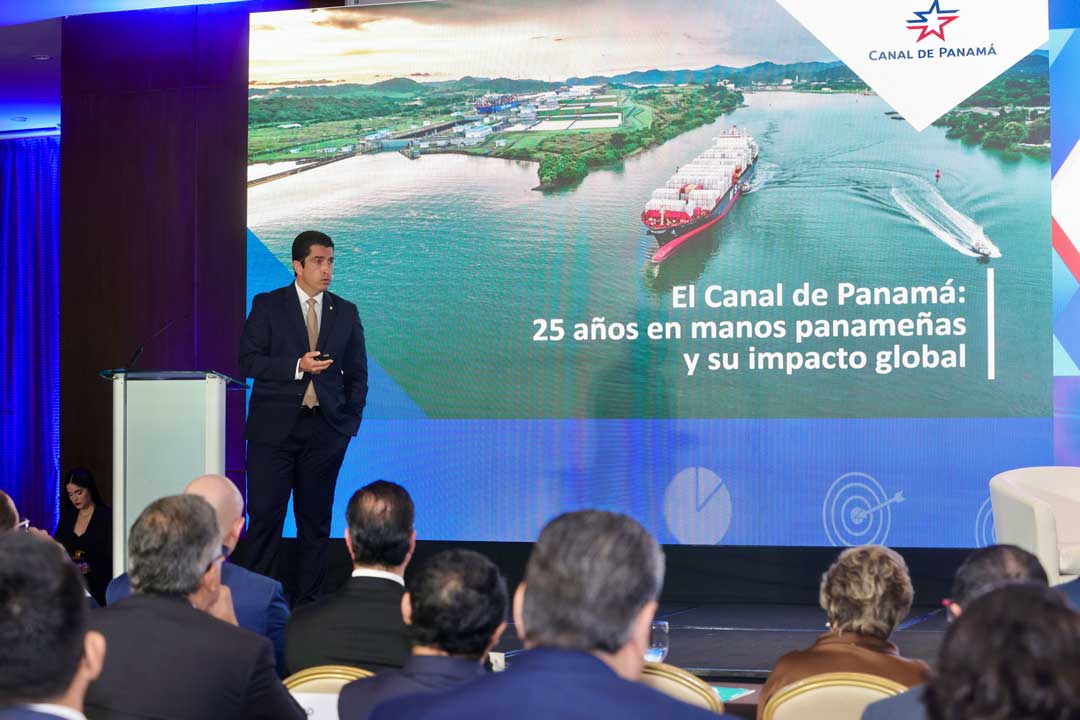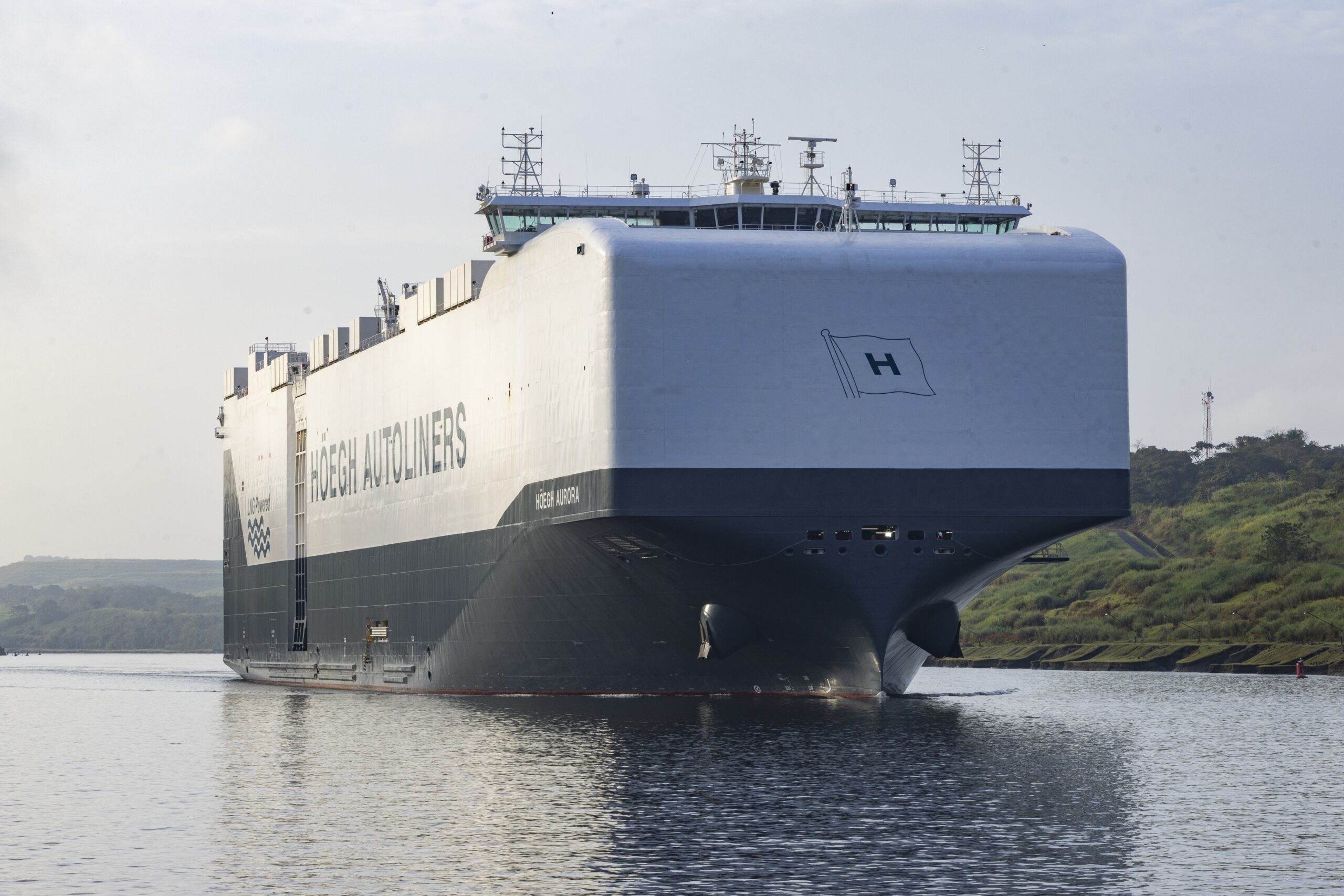Panama City, Panama, December 23rd, 2015 –2015 was an historic year for the Panama Canal and the Panama Canal Authority. In 2015, the ACP reached a number of milestones: nearing completion of the ACP’s first-ever expansion, setting a tonnage record, training employees, investing in simulation facilities and other infrastructure projects, instituting a new toll structure, and diversifying its products and services.
As the ACP looks forward to continuing to provide safe, reliable, and efficient service, ensuring the expansion is built to last the next 101 years and witnessing Panama’s transformation into the transportation and logistics hub of the Americas, the ACP is proud to offer the following highlights from the past fiscal year.
Setting Record Tonnage
In FY 2015, the Canal transited the most tonnage in its 101-year history. Specifically, 340.8 million Panama Canal tons (PC/UMS) of cargo moved through the waterway, representing a 4.3 percent year-on-year increase from 2014 and setting a cargo tonnage record. The previous record was set in FY 2012, when 333.7 million PC/UMS tons transited the waterway. This year’s record tonnage surpassed 2012 by more than seven million tons, highlighting the increased demand for and value of the Canal
Restructuring Tolls
Early in 2015, the ACP proposed a new tolls structure. The approval from the Panama Canal’s Board of Directors followed more than a year of consultations with industry representatives, an open call for comments, and a public hearing to solicit feedback on the proposed changes. The restructured tolls, which will feature a customer loyalty program for the container segment, will go into effect on April 1, 2016.
Building Bridges
The ACP marked another milestone this fiscal year when it broke ground to build a third bridge that spans the Canal. Work on the infrastructure project is progressing smoothly towards its anticipated completion in 2017. Once opened, it will connect the city of Colon and communities west of the Canal, linking the two regions, generating development, stimulating local economies, and boosting tourism.
Port of Corozal
Outside of expanding the Canal, the ACP is focused on several other synergistic business initiatives that provide new products and services for its customers and the maritime industry. The new Corozal Port is the most advanced of these enterprises, enhancing the Canal’s offering and diversifying its revenue base. There are nine initiatives total within the master plan—in varying degrees of analysis, study, and consideration–all of which render the entire system and route more attractive.
On Nov. 26, the ACP issued a Request for Qualifications for companies interested in competing to design, develop, finance, construct, operate, and maintain the Corozal Container Terminal. Nearly all of the world’s largest port operators expressed interest.
Among the project’s requirements is the need to develop a “green†terminal to limit impact on the environment. The terminal, which will be located at the Pacific entrance of the waterway, will feature anti-noise perimeter walls and electrical devices producing zero carbon emissions, along with a number of other elements recommended by an environmental impact study. Once operational, the terminal will produce up to 2,600 permanent jobs.
Additionally, a logistics park is currently under study, with a Roll-On/Roll-Off Terminal, a LNG Bunkering facility, and top-off operations for dry-bulk carriers, among others, being analyzed or considered.
Commitment to Sustainability
The ACP continued its diligent management and preservation measures for the Canal Watershed, protecting the water supply, caring for its environmental resources, and enhancing the sustainability of its wildlife. The ACP is constitutionally mandated to administer, maintain, use and conserve water resources of the Panama Canal Watershed, supporting the National Environmental Authority (ANAM) and others on reforestation, conservation, training, and education initiatives.
It is worth noting that, this year, the Expansion Project’s unique water-saving basins were completed. These water-savings basins employ state-of-the-art European technology that will allow the Canal, for the first time ever, to recycle water used during lockage of transiting vessels. Specifically, nearly 60 percent of the millions of gallons of water used per lockage in the new locks will be recycled. The ACP also continued to innovate with regard to new green and renewable initiatives and invest in clean technologies.
Preparation for the Expanded Canal Operation
The ACP’s preparation and training programs will help to ensure the continued reliability of the Panama Canal and that the existing Canal and the expanded Canal will run seamlessly. Some of them are related to the training of the Canal’s talented Pilots and Tugboat Captains, consisting of three core elements: training at its simulation center, conducting mock transits at the Panama Canal Scale Model Maneuvering Training Facility and conducting trial transits of Neo Panamax vessels chartered by the ACP.
Simulator Training
The ACP invested in new equipment and modeling software at its state-of-the-art Center of Simulation, Research and Maritime Development (SIDMAR). The upgraded SIDMAR facility offers the same immersive, 360-degree training experiences that Canal Pilots and Tugboat Captains previously had access to; however, it now provides training that simulates transiting a Neo Panamax vessel in a fully expanded canal, with elements such as the new locks and navigational channels. In FY 2016, an even more comprehensive program will be provided and will include a simulator, scale model, and in-field training with Portable Pilot Units (PPUs).
Scale Model Maneuvering Training
To complement the SIDMAR training, the ACP spent the past year constructing a Scale Model Maneuvering Training Facility, which will open early next year. It is one of the few facilities devoted to ship handling and training on a miniature scale, and is based on the industry leading Port Revel facility in France. Once complete, the 35.3–acre facility–which includes two lakes connected by a 518-meter channel modeling the Culebra Cut–will be the world’s largest of its kind.
The facility will be equipped with wave and wind generators and feature a number of meticulously created 1:25 scale model ships, each with helms, electric engines, bow and stern thruster controls, mooring lines, and operational anchors. Steering one of the miniature vessels mimics the feeling of being on a full-size vessel and allows Pilots and Tugboat Captains to practice their skills under alternate and, some argue, more realistic conditions than in simulators.
Transits and Other Training
In addition to these and other training programs, the ACP has made preparations to charter Neo Panamax vessels to conduct trial transits once the locks are complete to provide further training. Moreover, the ACP has conducted exercises on three occasions where ships transited the existing Canal without the use of locomotives. Some Pilots have also participated in theoretical and practical training programs at the Berendrecht lock in Belgium, currently the largest in the world, which is of similar design and operation to the expanded Canal.
Looking Ahead to FY 2016
Commenting on the past fiscal year, Panama Canal Administrator and CEO Jorge L. Quijano offered his thoughts:
“As the 101-year-old Canal reflects on the successes of the past fiscal year, I am so proud of our people and Panama. We look forward to the opening of the expanded Canal, providing safe, reliable, and efficient service to our customers for the next century and beyond. We are all excited about the road that lies ahead.”
About the Panama Canal
The Panama Canal is run by an autonomous agency of the Government of Panama in charge of managing, operating and maintaining the Panama Canal. The operation of the Panama Canal Authority (ACP) is based on its organic law and the regulations approved by its Board of Directors. For more information, please refer to the ACP’s website: http://www.pancanal.com or follow us on Twitter @thepanamacanal.




